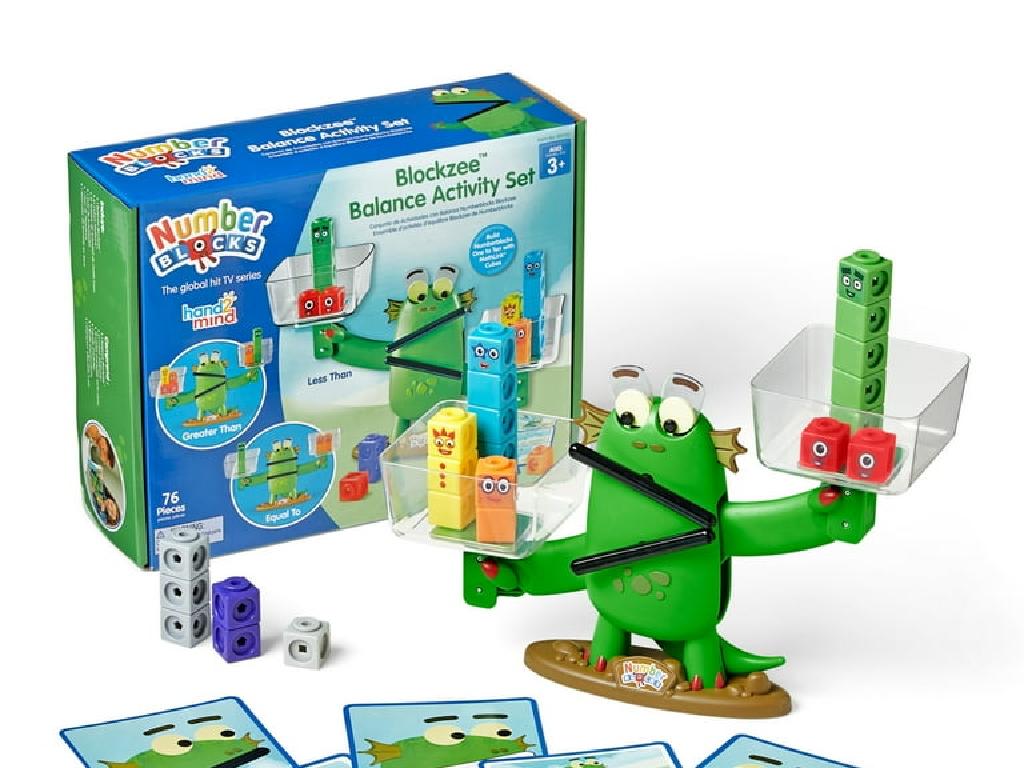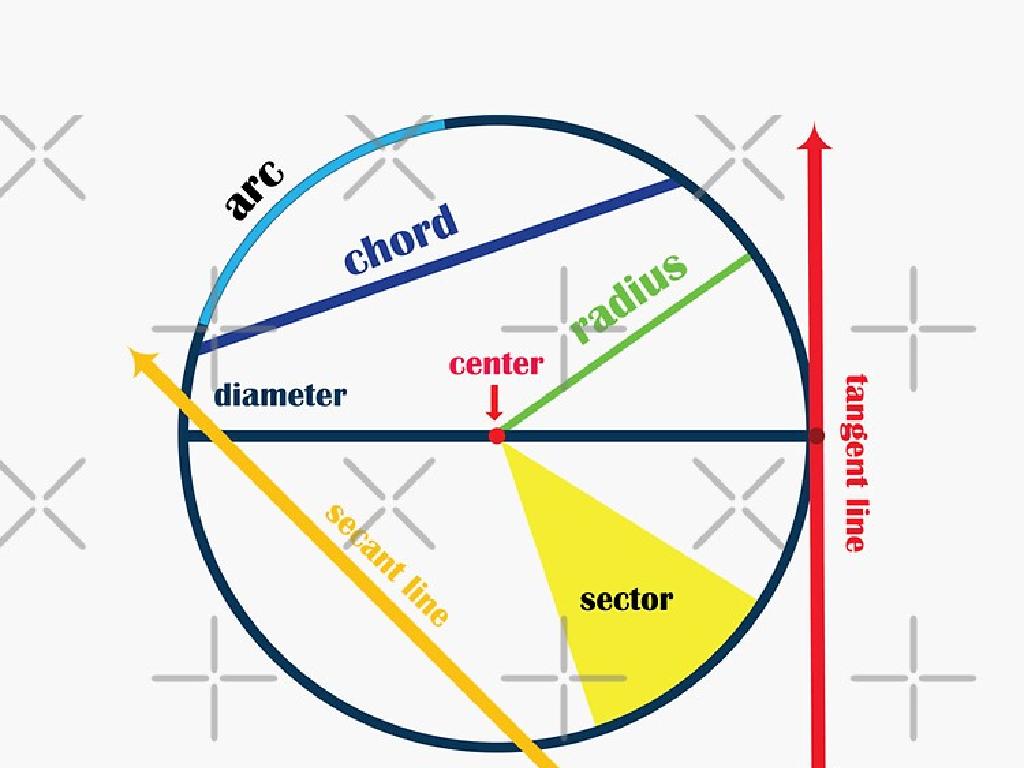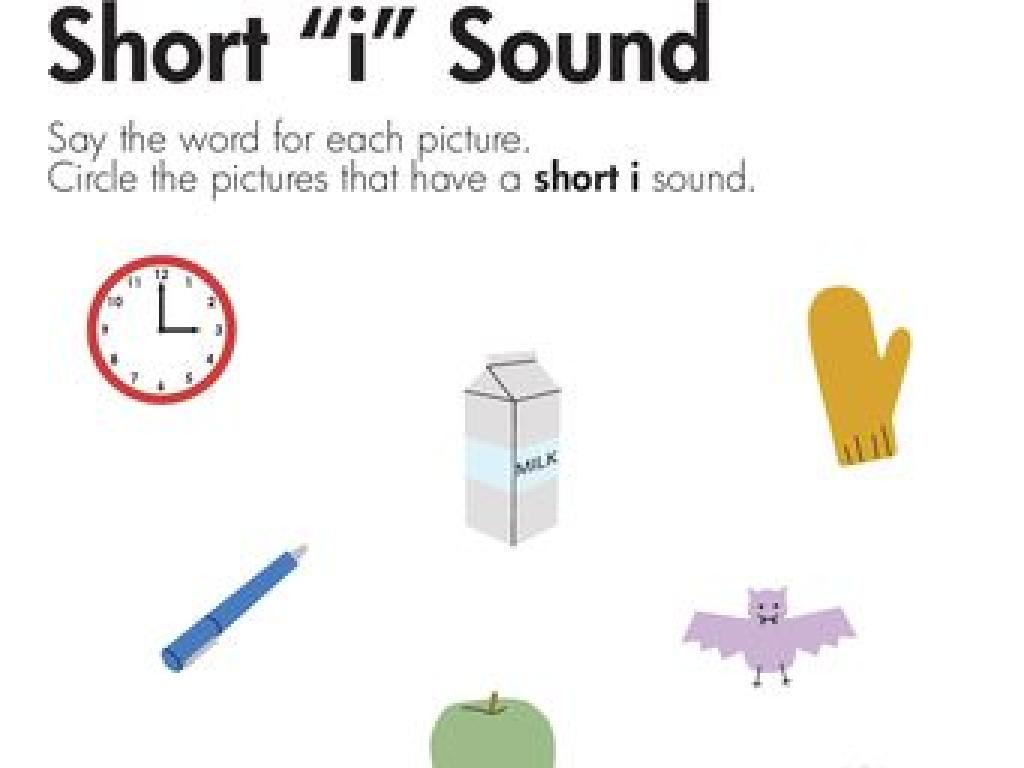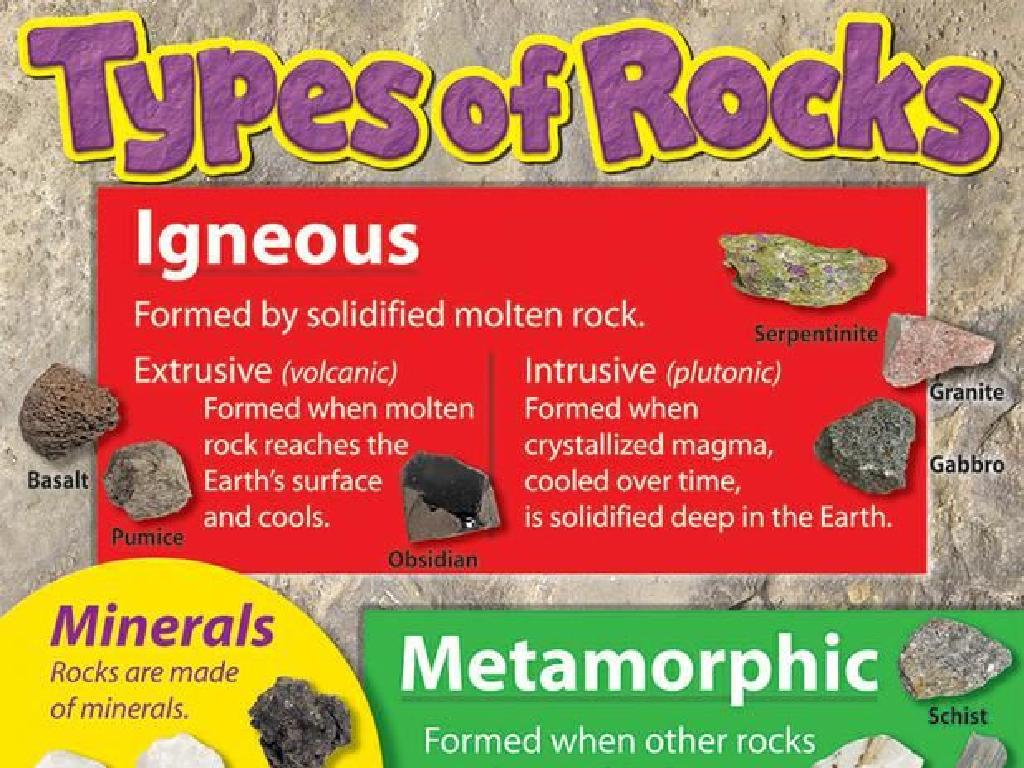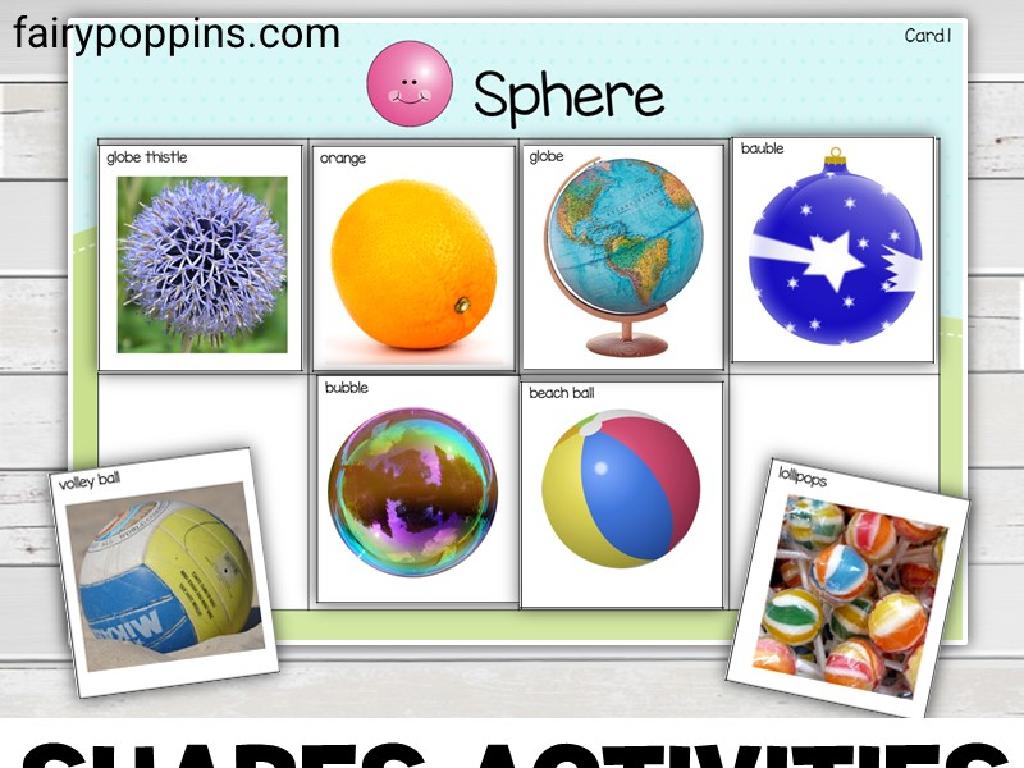Sort By The Number Of Syllables
Subject: Language arts
Grade: Kindergarten
Topic: Syllables
Please LOG IN to download the presentation. Access is available to registered users only.
View More Content
Welcome to Syllables!
– Greet the day with a cheerful ‘Good morning!’
– Words are like music; they have beats!
– Each beat in a word is a syllable, like ‘um-brel-la’ has three beats
– Clapping our hands to find syllables
– We’ll clap for each syllable to find how many there are
– Get ready to be word-detectives with claps!
|
This slide is designed to introduce Kindergarten students to the concept of syllables in a fun and interactive way. Start the class with a warm and energetic greeting to set a positive tone. Explain that syllables are like the beats in music, which can be discovered through clapping. Demonstrate clapping for each syllable in a word and encourage the children to join in. Use simple words that they are familiar with and gradually increase complexity. The goal is to make them comfortable with identifying syllables so they can apply this skill in reading and speaking. Prepare to guide them through the activity with patience and enthusiasm, ensuring each child has a chance to participate.
What Are Syllables?
– Syllables are word beats
– Just like music has beats, words have syllables!
– One vowel sound per syllable
– Every syllable has one vowel sound (a, e, i, o, u).
– Clap to find syllables
– When we say a word, we clap once for each syllable.
– Practice with different words
– Let’s try clapping syllables with words like ‘cat’, ‘butterfly’, and ‘banana’.
|
This slide introduces the concept of syllables to Kindergarten students by comparing them to beats in music, making it easier for them to grasp. Emphasize that syllables are chunks of sound in words and each chunk has one vowel sound. Demonstrate clapping for each syllable in a word to help them identify syllables. Practice with the class using simple words and gradually move to longer words. Encourage the students to listen for the vowel sounds and clap along. This kinesthetic activity will help solidify their understanding of syllables in a fun and interactive way.
Listening to Syllables: Clap It Out!
– Listen and clap for syllables
– ‘Cat’ has one clap
– Say ‘cat’ and clap once
– ‘Kitten’ equals two claps
– Say ‘kitten’ and clap twice
– Let’s clap for ‘butterfly’
– ‘Butterfly’ has three claps
|
This slide is designed to engage Kindergarten students in a fun and interactive activity to understand syllables. Start by explaining that syllables are like beats in words. Demonstrate clapping for each syllable in a word. Use simple words like ‘cat’ and ‘kitten’ as examples, clapping once for ‘cat’ and twice for ‘kitten’. Then, invite the students to join in and clap for the word ‘butterfly’, emphasizing each syllable as they clap three times. Encourage the students to listen carefully to the sounds and practice with more words. This activity helps them to break down words and improve their phonological awareness.
Sorting Words by Syllables
– Words can be sorted by claps
– Each clap equals one syllable
– One clap words in one group
– ‘Dog’ has one clap, so it’s a one clap word
– Two clap words in another group
– ‘Elephant’ has three claps, so it’s a three clap word
– Let’s sort: dog, elephant, chocolate
– ‘Chocolate’ has three claps, so it’s a three clap word
|
This slide introduces the concept of syllables to Kindergarten students by associating syllables with claps. Explain that syllables are like beats in words and clapping once for each beat helps us count them. For the activity, demonstrate clapping for each word and sorting them into groups based on the number of claps. ‘Dog’ will have one clap, ‘elephant’ three claps, and ‘chocolate’ also three claps. Encourage the students to clap along and sort the words themselves. This kinesthetic activity helps reinforce the concept of syllables in a fun and engaging way.
Practice Time: Sorting Syllables
– Listen to the word I say
– Clap for each syllable you hear
– One clap for each part of the word
– Count the syllables together
– We’ll practice a few together first
– Place the word in the right group
– Your worksheet has groups for 1, 2, or 3 syllables
|
This slide is for a class activity to help Kindergarten students understand and practice sorting words by the number of syllables. Start by clearly pronouncing a word and have the students clap once for each syllable they hear. This kinesthetic activity helps them break down the word and count its syllables. After clapping, guide them to decide on the number of syllables and then place the word in the correct group on their worksheet, which should be organized by syllable count. For example, the word ‘cat’ has one syllable, ‘tiger’ has two, and ‘elephant’ has three. Encourage the students to listen carefully and participate actively. The teacher’s notes should include a list of words to use during the activity and suggestions for making the activity engaging, such as using a mix of simple and more complex words to accommodate different learning levels.
Let’s Play a Syllable Sorting Game!
– Listen to the word carefully
– Clap for each syllable you hear
– If you hear ‘banana’, you clap three times: ba-na-na
– Move your marker on the board
– Reach the end to win a sticker!
|
This slide introduces a fun and interactive game to help Kindergarten students understand and practice syllables. The game involves listening to words, identifying syllables by clapping, and moving a game marker accordingly. It’s a race to the finish line, where a sticker awaits as a reward. Teachers should demonstrate clapping for each syllable before starting the game and ensure that each student understands the rules. Prepare a list of words with varying syllable counts and a simple game board with spaces for each student’s marker. Encourage participation and praise efforts to create a positive learning environment.
Class Activity: Syllable Sorting Fun!
– Work together in small groups
– Sort picture cards by syllables
– Each card has a picture; decide how many syllables each picture name has
– Use the mat with numbers 1, 2, 3
– Place cards in the correct section
– For example, ‘cat’ goes in section 1, ‘rabbit’ in section 2, ‘elephant’ in section 3
|
This activity is designed to help Kindergarten students understand the concept of syllables in a fun and interactive way. By working in groups, students will engage with each other and reinforce their learning through collaboration. The mats provided will have sections labeled with numbers 1, 2, and 3, representing the number of syllables. Teachers should guide the students on how to clap out syllables and determine where each picture card should be placed. For example, ‘dog’ has one syllable, ‘turtle’ has two, and ‘banana’ has three. Teachers should prepare a variety of picture cards and ensure that each group has a set. After the activity, discuss with the class why each card belongs in its section to solidify their understanding.
Review and Goodbye!
– Recap on syllables
– We learned syllables break words into parts.
– Syllables: word heartbeats
– Each syllable is one beat in a word.
– Praise for today’s effort
– Anticipate more syllable learning
– Get ready to play more syllable games!
|
This slide is meant to wrap up the lesson on syllables. Start by recapping the concept of syllables and how they divide words into smaller, pronounceable parts. Emphasize the analogy of syllables being like the heartbeat of words to help students remember the rhythmic nature of syllables. Offer praise to the students for their hard work during the lesson and encourage them by looking forward to the next class. The teacher should prepare a few simple words to practice clapping out syllables as a group to reinforce the day’s learning.

